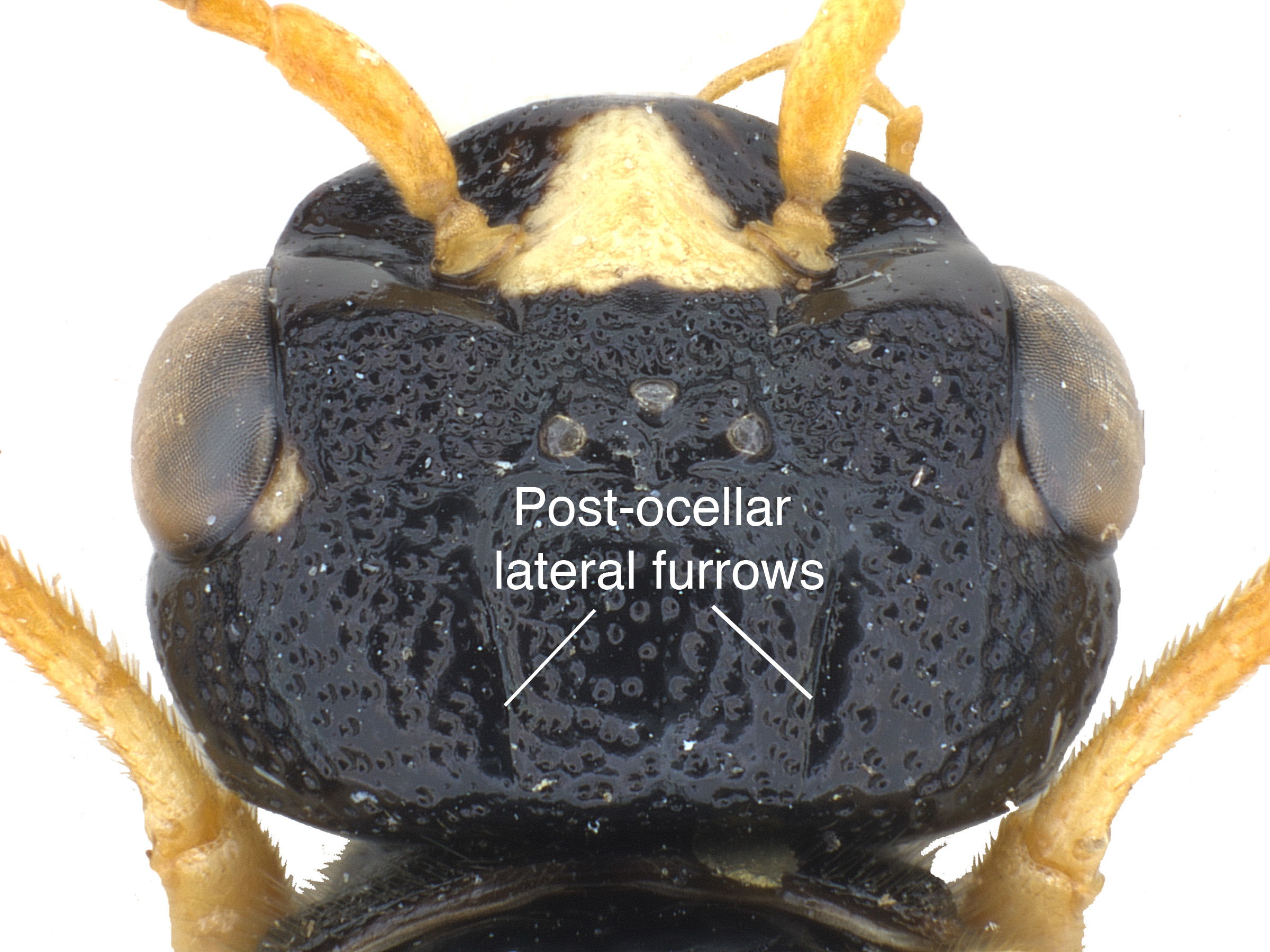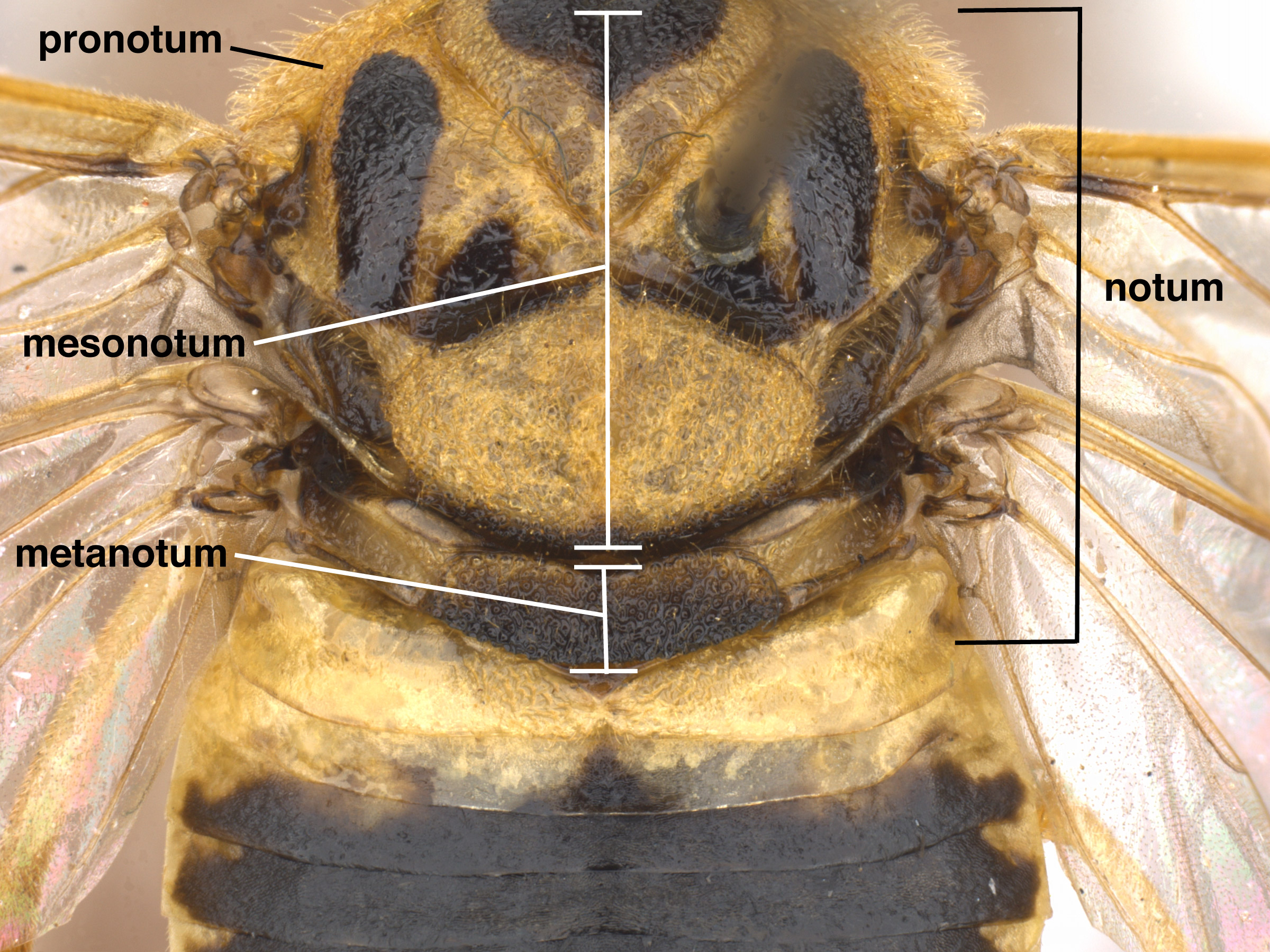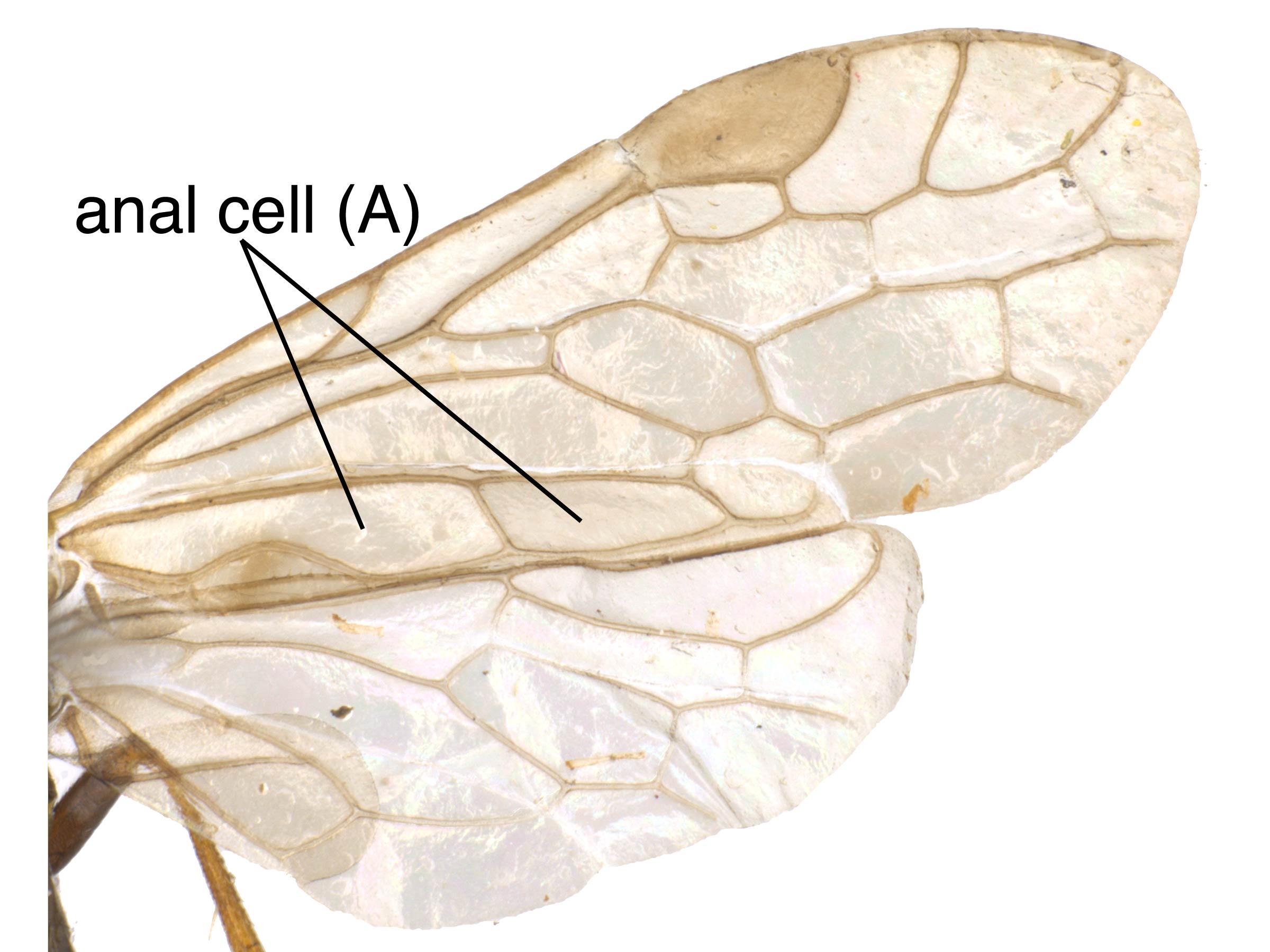Family: Tenthredinidae
Family common name: common sawflies
Subfamily: Heterarthrinae
Tribe: Fenusini
Genus: Nefusa Ross, 1951
Subgenera: none
The Tenthredinidae are the most species-rich family and are found throughout the world, in all continents but Antarctica. They are known as the “common sawflies.” They can generally be recognized by a cylindrical body and long, segmented antennaeantenna:
the sensory organ emerging from the front of the head, usually between the compound eyes and above the clypeus; includes the flagellum, scape and pedicel
 . Otherwise, they come in a variety of colors, sizes, and forms (Goulet 1992Goulet 1992:
. Otherwise, they come in a variety of colors, sizes, and forms (Goulet 1992Goulet 1992:
Goulet H. 1992. The genera and subgenera of the sawflies of Canada and Alaska: Hymenoptera. Symphyta. The insects and arachnids of Canada. Part 20. Agriculture Canada Publication.).
Sawflies in the Heterarthrinae subfamily are generally small and dark-colored. Many species of this family are economic pests of trees and shrubs and can be characterized by their skeletonizing or leaf-mining larval feeding behaviors. Heterarthrinae adults can be distinguished from those of other subfamilies by wing venationvenation:
the network of veins on a wing
(Smith 1971aSmith 1971a:
Smith DR. 1971a. Nearctic Sawflies. III. Heterarthrinae: Adults and larvae (Hymenoptera: Tenthredinidae). Technical Bulletin, U.S. Department of Agriculture 1420: 1-84.).
Nefusa are generally very small, about 2–4 mm in length, and mostly black with slightly darkened wings (Smith 1971aSmith 1971a:
Smith DR. 1971a. Nearctic Sawflies. III. Heterarthrinae: Adults and larvae (Hymenoptera: Tenthredinidae). Technical Bulletin, U.S. Department of Agriculture 1420: 1-84., Wei 1994Wei 1994:
Wei M. 1994. Studies on the tribe Fenusini of China (Hymenoptera: Tenthredinidae). Entomologia Sinica 1(2): 110-123.). It is monotypicmonotypic:
describes having only one representative; ex. a genus that includes only one species
in North America. Nefusa ambigua is mostly black with yellow on the venter of the abdomenabdomen:
the third and last segment of an insect's body; in sawflies this is usually made up of 11 segments (segments 9 and 10 often fused) , and on parts of the antennaeantenna:
, and on parts of the antennaeantenna:
the sensory organ emerging from the front of the head, usually between the compound eyes and above the clypeus; includes the flagellum, scape and pedicel
 and legs (Smith 1971aSmith 1971a:
and legs (Smith 1971aSmith 1971a:
Smith DR. 1971a. Nearctic Sawflies. III. Heterarthrinae: Adults and larvae (Hymenoptera: Tenthredinidae). Technical Bulletin, U.S. Department of Agriculture 1420: 1-84.). The Fenusini tribe are all leaf miners (Goulet 1992Goulet 1992:
Goulet H. 1992. The genera and subgenera of the sawflies of Canada and Alaska: Hymenoptera. Symphyta. The insects and arachnids of Canada. Part 20. Agriculture Canada Publication.).
There are three described extantextant:
in existence; opposite of extinct
species worldwide. One species occurs in North America (Taeger et al. 2010Taeger et al. 2010:
Taeger A, Blank SM, and Liston AD. 2010. World Catalog of Symphyta (Hymenoptera). Zootaxa 2580: 1-1064.).
Subfamily characters
 M slightly constricted at apexapex:
M slightly constricted at apexapex: vein 2r present (Goulet 1992Goulet 1992:
vein 2r present (Goulet 1992Goulet 1992:Genus characters
 only slightly longer than wide (Goulet 1992Goulet 1992:
only slightly longer than wide (Goulet 1992Goulet 1992: ; prepectusprepectus:
; prepectusprepectus: with dense, even hairs (Goulet 1992Goulet 1992:
with dense, even hairs (Goulet 1992Goulet 1992: veins 2A and 3A incomplete, not curved (Smith 1967cSmith 1967c:
veins 2A and 3A incomplete, not curved (Smith 1967cSmith 1967c: cellcell:
cellcell: R1 open to margin (Smith 1967cSmith 1967c:
R1 open to margin (Smith 1967cSmith 1967c: anal cellanal cell:
anal cellanal cell: present (Smith 1967cSmith 1967c:
present (Smith 1967cSmith 1967c: with large basalbasal:
with large basalbasal: simple (Smith 1971aSmith 1971a:
simple (Smith 1971aSmith 1971a:Nefusa can be confused with other genera in the subfamily. It can be distinguished by the prepectusprepectus:
lateral sclerite anterior to mesopleuron (sometimes absent)
, antennal pedicelpedicel:
the second antennal segment, between the scape and flagellum
 length, and haired mesonotummesonotum:
length, and haired mesonotummesonotum:
the second segment of the dorsum of the thorax
 (Smith 1971aSmith 1971a:
(Smith 1971aSmith 1971a:
Smith DR. 1971a. Nearctic Sawflies. III. Heterarthrinae: Adults and larvae (Hymenoptera: Tenthredinidae). Technical Bulletin, U.S. Department of Agriculture 1420: 1-84., Goulet 1992Goulet 1992:
Goulet H. 1992. The genera and subgenera of the sawflies of Canada and Alaska: Hymenoptera. Symphyta. The insects and arachnids of Canada. Part 20. Agriculture Canada Publication.).
none
Nefusa in North America feeds on Viola sororia (common blue violet) and other Viola spp. (violet) (Smith and Eiseman 2015Eiseman 2015:
Eiseman CS. 2015. On the distinctive feeding pattern of Sterictiphora Billberg (Hymenoptera: Argidae) sawfly larvae. Proceedings of the Entomological Society of Washington 117 (1): 65-67.).
Females oviposit single eggs into the upper surface of the leaf. After hatching, larvaelarva:
the immature stage of holometabolous insects
 feed on the inner leaf tissue and create blotch mines for about 22-28 days (Smith 1971aSmith 1971a:
feed on the inner leaf tissue and create blotch mines for about 22-28 days (Smith 1971aSmith 1971a:
Smith DR. 1971a. Nearctic Sawflies. III. Heterarthrinae: Adults and larvae (Hymenoptera: Tenthredinidae). Technical Bulletin, U.S. Department of Agriculture 1420: 1-84.). LarvaeLarva:
the immature stage of holometabolous insects
 are white and dorsoventrally flatteneddorsoventrally flattened:
are white and dorsoventrally flatteneddorsoventrally flattened:
the body is flattened from the upper and lower surfaces, like a flatworm
with reduced thoracicthoracic:
of or on the thorax
legs and undeveloped prolegs (Smith and Eiseman 2015Eiseman 2015:
Eiseman CS. 2015. On the distinctive feeding pattern of Sterictiphora Billberg (Hymenoptera: Argidae) sawfly larvae. Proceedings of the Entomological Society of Washington 117 (1): 65-67.). At maturity, the larvaelarva:
the immature stage of holometabolous insects
 exit the mines and fall to the soil to build a cellcell:
exit the mines and fall to the soil to build a cellcell:
1. a membranous area of the wing between veins, 2. a small cavity or closed space
 , then burrow and overwinter (Smith 1971aSmith 1971a:
, then burrow and overwinter (Smith 1971aSmith 1971a:
Smith DR. 1971a. Nearctic Sawflies. III. Heterarthrinae: Adults and larvae (Hymenoptera: Tenthredinidae). Technical Bulletin, U.S. Department of Agriculture 1420: 1-84.). Nefusa ambigua is bivoltinebivoltine:
describing a life cycle with two generations per calendar year
(Smith and Eiseman 2015Eiseman 2015:
Eiseman CS. 2015. On the distinctive feeding pattern of Sterictiphora Billberg (Hymenoptera: Argidae) sawfly larvae. Proceedings of the Entomological Society of Washington 117 (1): 65-67.).
World: This genus is known from North America, and from Fujian and Sichuan provinces of China (Wei 1994Wei 1994:
Wei M. 1994. Studies on the tribe Fenusini of China (Hymenoptera: Tenthredinidae). Entomologia Sinica 1(2): 110-123., Taeger et al. 2018Taeger et al. 2018:
Taeger A, Liston AD, Prous M, Groll EK, Gehroldt T, and Blank SM. 2018. ECatSymmdash;Electronic World Catalog of Symphyta (Insecta, Hymenoptera). Program version 5.0 (19 Dec 2018), data version 40 (23 Sep 2018). Senckenberg Deutsches Entomologisches Institut (SDEI), Muuml;ncheberg. https://sdei.de/ecatsym/ Accessed: 28 Jan 2020.).
North America: Nefusa ambigua occurs in eastern United States and southeastern Canada (Smith 1971aSmith 1971a:
Smith DR. 1971a. Nearctic Sawflies. III. Heterarthrinae: Adults and larvae (Hymenoptera: Tenthredinidae). Technical Bulletin, U.S. Department of Agriculture 1420: 1-84.).
Map data from Smithsonian National Museum of Natural History Entomology Collection (USNM)
Details about data used for maps can be found here.